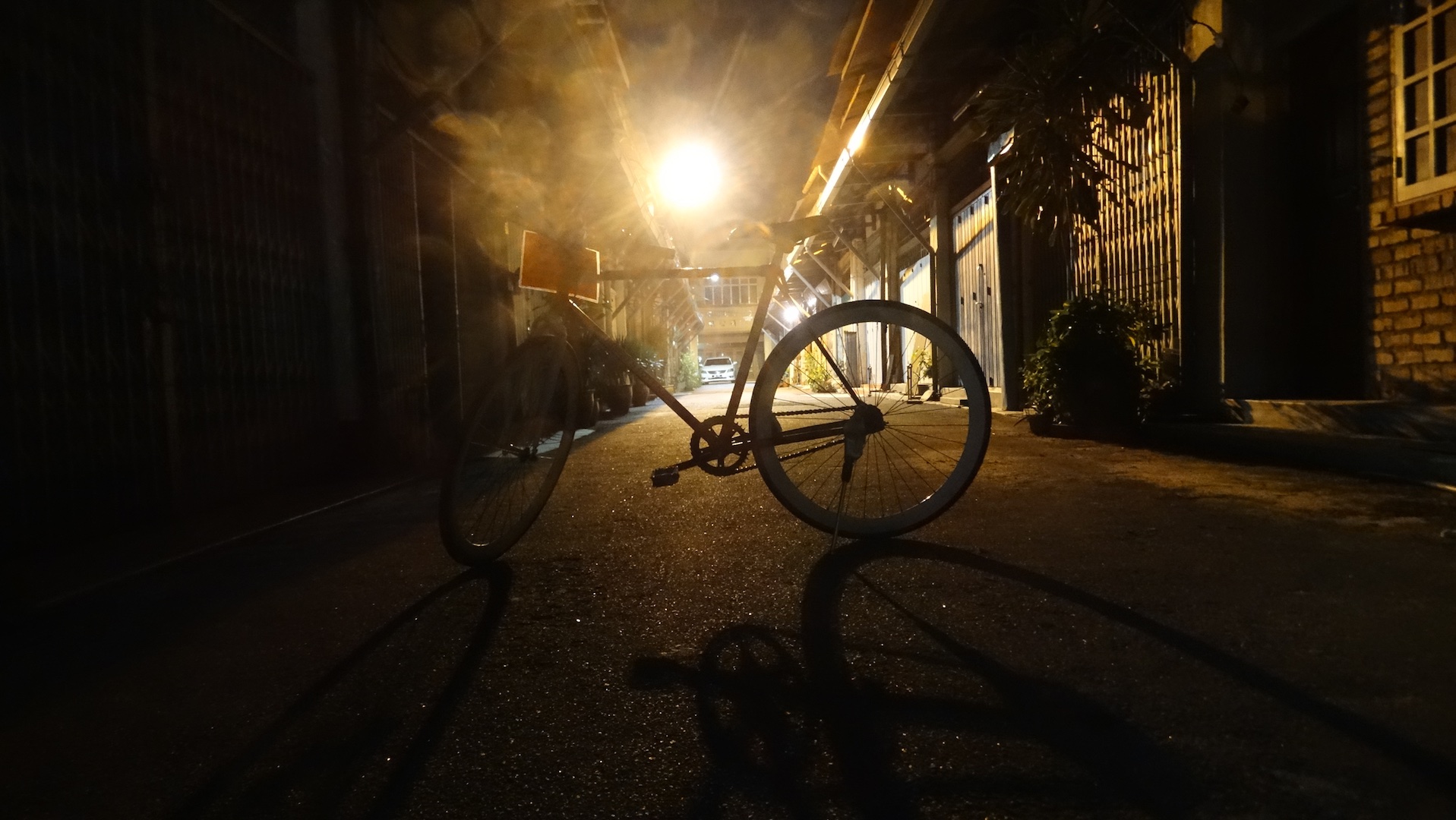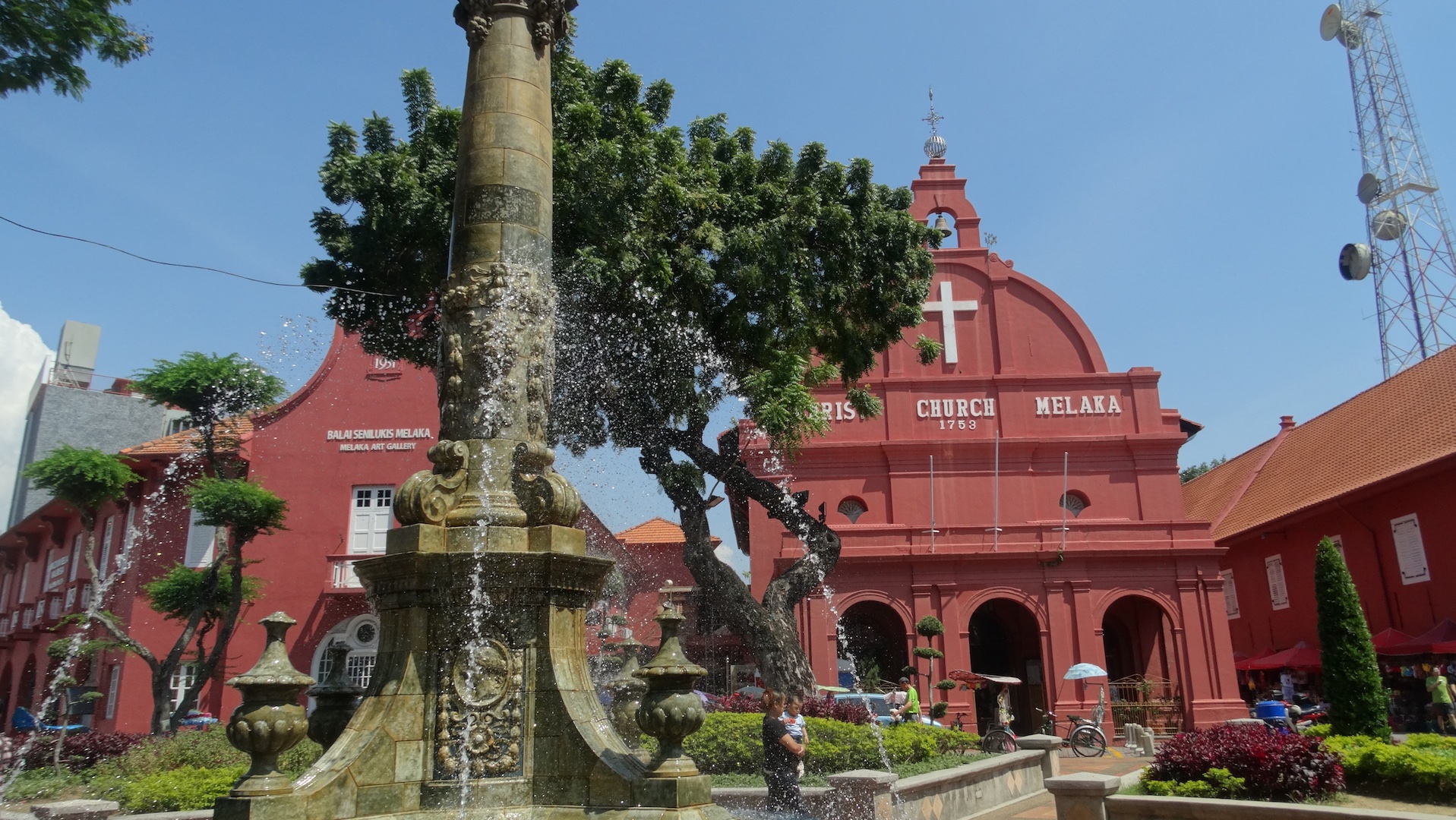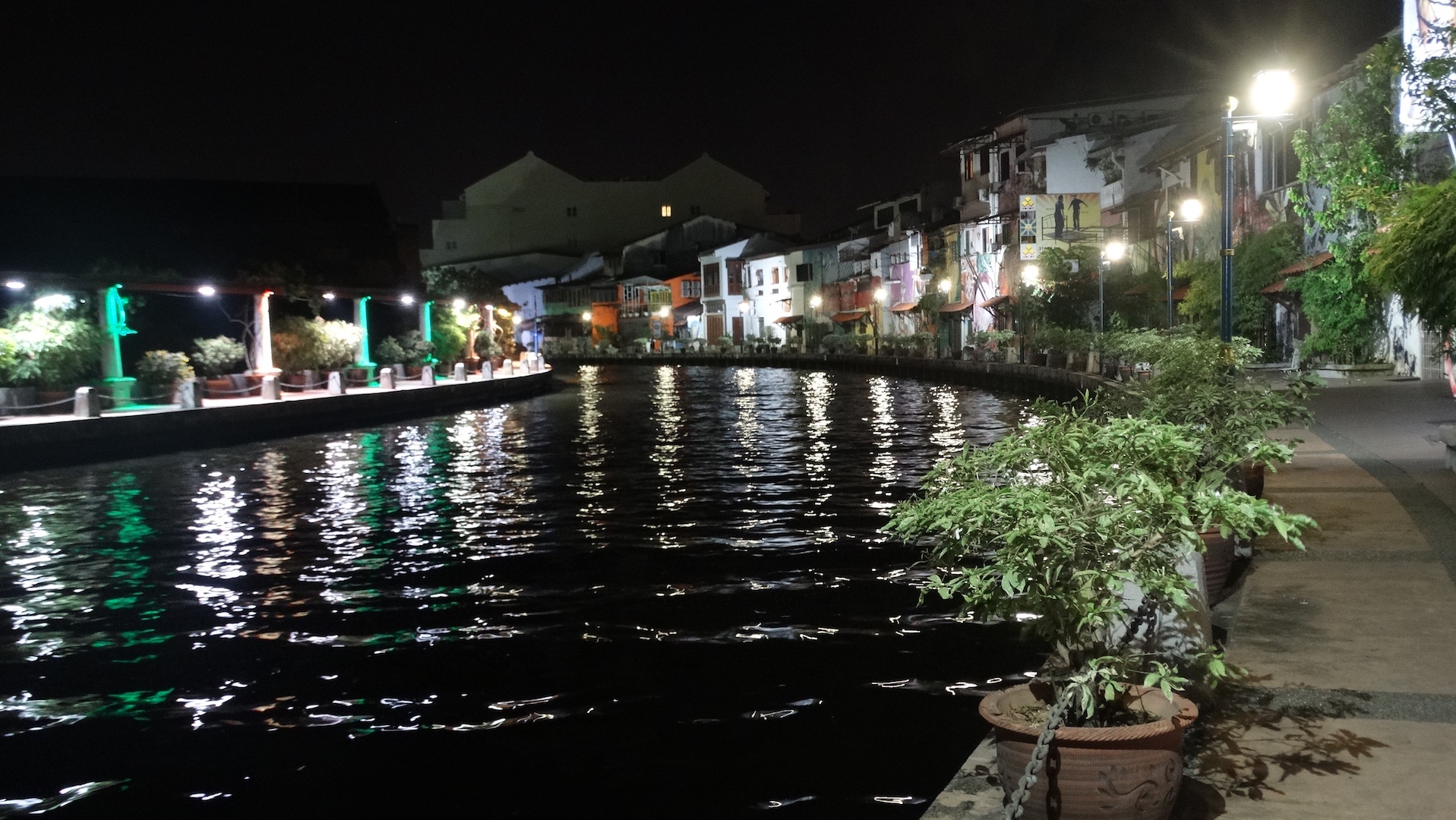COLONIAL PAST AND CYCLING PRESENT IN MELAKA

I came to Melaka, because I’m interested in places with some colonial heritage. In some ways, being Scottish – and therefore also British – gives me some kind of distant connection to around a quarter of the world. I say distant, because the prevailing politically correct attitude towards colonialism is disdain and contrition. As a result, this prevents anyone in the public sphere from attributing any positive dimensions to its legacy.
Yet, open any guide book or browse a travel site and writers will gush about the architecture, food, transport, language and cultural remnants of past occupiers. In many cases, the ‘coloniality’ of a place is its defining feature and main draw.
Exploring Melaka’s Historic Sites
The city of Mellaca (Melaka in Malay), is the capital of Mellaca state, which lies on the South West coast of the Malaysian peninsular. From 1511 until 1948 the Portuguese, Dutch and then British all set up shop here. ‘Shop’ because of its strategic location on the Straits of Melaka. This stretch of water between Peninsular Malaysia and Indonesia was the quickest sailing route between India and China – and therefore a lucrative trading hub.
Christ Church
On the day I arrived, I decided to go for a wander round some of Mallaca’s well publicised historic sites. These included a couple of prominent colonist mainstays: a church and a fort. The former, aptly named ‘Christ Church’, dates from the middle of the 18th century and was built to mark 100 years of Dutch presence. Although, I’m not sure that Jesus would have approved of his name being used to commemorate the subjugation of an indigenous population. That is, of course, unless JC had been swayed by a lucrative offer from the Dutch to purchase the rights to use his name.
Donald Trump uses his reputation in a similar fashion. By some estimates, he has earned over £50 million dollars in the last couple of years, licensing his famous surname to various hotels and resorts around the world.

Historians claim that the church is the oldest protestant place of worship in Malaysia. But I wasn’t particularly struck by its beauty or sense of history. Multiple renovations have resulted in the exterior being a fairly uniform okra colour with a large white cross over the door, and an ornate fountain outside in the square. There is also the full compliment of plastic goods from China, available for purchase.
A’Famosa Fort
The A’Famosa (famous) fort, gives more of an insight into the length of its service. Mainly because there is very little left of it other than one of the arched gates. At the height of the Portuguese presence in Malacca, the fort’s walls housed or forted the entire administration. This included hospitals, churches and presumably some places to eat.
St Paul’s Church
The final stop on my colonial tour of Malacca was St. Paul’s church. Reassuringly, this sits on top of St Paul’s Hill, and overlooks the fort. It seems Paul outdid Christ in Malacca, in terms of branded landmarks. Now a crumbling ruin, it does offer some decent views of the city and tells of the foreign influences. Portugal built it, Holland attacked it and Britain used it to store gunpowder.
Cycling Along the River
It’s hot in Malaysia – really hot. Therefore, as I recovered at the hostel I decided that I would execute the following day’s itinerary on two wheels, in order eek out what breeze there was. As it turned out, I didn’t have to wait until the next day. I signed up for a dinner and cycling group excursion put on by the proprietor. So, once I had selected a bike – with sufficient braking capability to limit the chances of freewheeling into fast moving traffic at junctions – we set off.
Dinner at the Mamak
We stopped for dinner at a fairly standard Mamak style restaurant which serves fusion Indian and Malay cuisine. Spicy, quick and usually delicious. Unfortunately, some of my fellow foreign diners were predisposed to get the very least out of the experience. This stemmed from being either vegan, chilli averse, picky, or merely fearful of eating something that they hadn’t had before and weren’t sure if they’d like. One girl from Chile joked that she survived on cereal bars and nuts. A small to medium sized rodent with expensive Merrel hiking/sitting in hostel social areas using wifi, hybrid shoes.
Cycling by the River
At any rate, they were all very agreeable and we were soon travelling in convoy around the streets of Melaka heading for the riverside path. I can’t stress how much I enjoyed this experience. A belly full of curry, warm evening breeze and beautifully designed and lit walk and cycle way beside the river. Melaka also has UNESCO status for the preservation of its charming shop and townhouses. There are up to 9 different styles, dating back as far as the 17th century.

As you cycle along you’re bathed in colourful light which dances on the water and illuminates the foliage on the trees. One minute you’re riding on a paved surface, the next through gravel and then gently bumping over a wooden boardwalk. We returned to the hostel, but I only stayed long enough to get my GoPro and head back to the river. I needed a more extended ride and an opportunity to wear a camera on my head. Best done in darkness, alone.
Melaka is a fantastic place to spend some time. And while the remnants of past imperial powers are interesting, a night time sojourn along the river by bicycle was the real jewel in the crown.